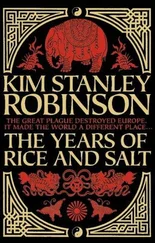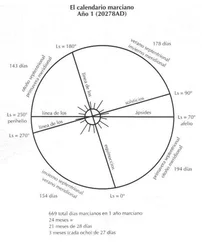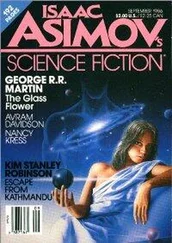On that front too there were interesting developments. Clean coal had, up until this point, only meant burning coal and capturing the particulate load released to the atmosphere. That was called clean, but it was a strange issue, because the particulates were probably lofting into the high atmosphere and reflecting sunlight away, creating at least part of the so-called “global dimming,” meaning the lower levels of sunlight that had been reaching the surface of the Earth in the last few decades compared to when it had first been measured. So that cleaning up coal burning in that way might actually let more light through and add to the global warming overall.
As for the carbon dioxide released when coal was burned, that had not been a part of what they had been calling clean coal. But now their prototype plant’s blueprint included a complete plan for burning coal and capturing both carbon dioxide and particulates before release. None of the elements were speculative; all existed already and could be combined. It would be expensive; it would mean that each coal-burning power plant would become a complicated and expensive factory. But so what? It could be argued that this was only another advantage for the manufacturers of such plants. Public utilities, private investors, ultimately it didn’t matter; it had to be done, it had to be paid for, someone would get paid when society made the payment. It was simply work to be done.
Meanwhile, on another front, captured carbon dioxide was being injected into depleted oil wells. Compressed and frozen, the dry ice was put under pressure until it flowed down old oil pipes and filled the pores of rock that had been drained of its oil. They were doing it in Canada, off Norway in the North Sea, and they were now starting to do it in Texas. Putting the carbon dioxide down there both sequestered it nicely, for thousands of years at least, and also put more pressure on the remaining oil deposits, making them easier to pump up. Because even if they stopped burning oil, they still needed it as the feed-stock for plastics and pesticides. They would still be wearing it and eating it; they would just stop burning it.
All these projects were pouring into NSF and Energy and many other federal agencies and being screened by Diane’s committee and placed into the mission architecture that indicated what they needed all up and down the structure of their new technology. There were very few weak points or question marks in this architecture! They could swap out power and transport in less than ten years!
But even if they stabilized carbon emissions immediately, even if they were to stop burning carbon entirely, which was a theoretical possibility only, for the sake of calculation, global temperatures would continue to rise for many years. The continuity effect, as they called it, and a nasty problem to contemplate. It was an open question whether temperatures even in the best case scenario would rise enough to cross the threshhold to further positive feedbacks that would cause it to rise even more. Models were not at all precise on this subject.
So they had to continue to discuss the ocean problems, among many others. In one meeting, Diane asked Frank about the Sample Basin Study that was looking into flooding dry lake basins, and Frank called up an e-mail from the P.I.
Frank said, “China likes the idea. They say they’ve already done similar things, at Three Gorges of course, but also at four more dams like Three Gorges. Those are mostly for hydroelectric and flood control, and they’re seeing climate effects downwind, but they feel they’ve got experience with the process, and say they would be willing to take more. And the biggest basins on Earth are all theirs.”
“But, salt water?”
“Any lake helps cloud formation, so they would be hydrating the deserts downwind by precipitating out.”
“Still, it’s hard to imagine them sacrificing that much land.”
“True. But clearly there’s going to be something like carbon cap credits set up. Some kind of sea water credits, given to countries for taking up sea water. Maybe even combine it with carbon trading, so that taking up sea water earns carbon credits. Or funding for desalination plants on the basin’s new shorelines. Or whatever. Some kind of compensation.”
Diane said, “I suppose we could arrange a treaty with them.”
Later they worked on the Antarctic aspect of the plan. The dry basins of the world didn’t have enough capacity to keep sea level in place anyway, so they needed to push the Antarctic idea too. If that ended up working, then in theory the Eastern Antarctic Ice Sheet would be able to handle all possible excess, and the dry basins up north would only be filled if the net effects of doing so looked good to the host country.
“Sounds good. But it’s a lot of water.”
That night Frank walked out of the security gate on 17th Street, at the south end of the Old Executive Offices, and across the street there was a woman standing as if waiting for the light to change. His heart pounded in his chest like a child trying to escape. He stared—was it really her?
She nodded, jerked her head sideways: follow me . She walked up to G Street and Frank did too, on the other side of the street. His pulse was flying. An amazing physical response—well, but she had been out of touch and now there she was, her face so vivid, so distinctly hers, leaping out of reality into his mind. Oh my, oh my. She must have seen his jump through her surveillance camera, or heard his mental call. So often telepathy seemed real. Or maybe she had been discovered, and forced to go on the run again. In need of his help. It could be anything.
A red light stopped him. She had stopped too, and was not crossing with the green to him. Apparently they were to walk in parallel for a while, west on G Street. It was a long light. If you felt each second fully, a lifetime would become an infinity. Maybe that was the point of being in love, or the reward. Oh my. He could feel the knock of his heart in the back of his nose. He followed her down G Street, past the Watergate complex, and across the Parkway, through the boating center parking lot, down into the trees at the mouth of Rock Creek, where finally they could converge, could crash into each other’s arms and hug each other hard, hard, hard. Ah God, his partner in exile, his fellow refugee from reality, here at last, as real as a rock in his hands.
“What’s up?” he said, his voice rough, out of his control. Only now did he feel just how scared he had been for her. “I’ve been scared!” he complained. “Look—I have to have a way to get in touch with you, I just have to . We have to have a drop box or something, some way to do it. I can’t stand it when we don’t. I can’t stand it anymore!”
She pulled back, surprised at his vehemence. “Sorry. I’ve been working out my routines, figuring out what I can do and what I can’t. They’re still after me, and I wasn’t totally sure I could stay off their radar, and so—I didn’t want to get you caught up in anything.”
“I already am caught up in it. I am fully caught up in it!”
“Okay, okay. I know. But I had to make sure we were both clear. And usually you’re not. They know about that Khembalung embassy house, and their place in Maryland too.”
“I know! They know all that! What about now? Am I clear?”
She took a wand out of her pocket, ran it over him. “Right now you are. It happens most often right when you leave work. The chips are mostly in stuff you leave at your other places. But I had to see you. I needed to see you.”
“Well good.” Then he saw on her face how she felt, and his spirits ballooned: at this first flash of reciprocation, the feeling blazed up in him again. Love was like a laser beam bouncing between two mirrors. She smiled at the look on his face, then they embraced and started to kiss, and Frank was swept away in a great wave of passion, like a wave catching him up in the ocean. Off they went in it, but it was more than passion, something bigger and more coherent, a feeling for her, his Caroline—an overwhelming feeling. “Oh my,” he said over her shoulder.
Читать дальше
Конец ознакомительного отрывка
Купить книгу












